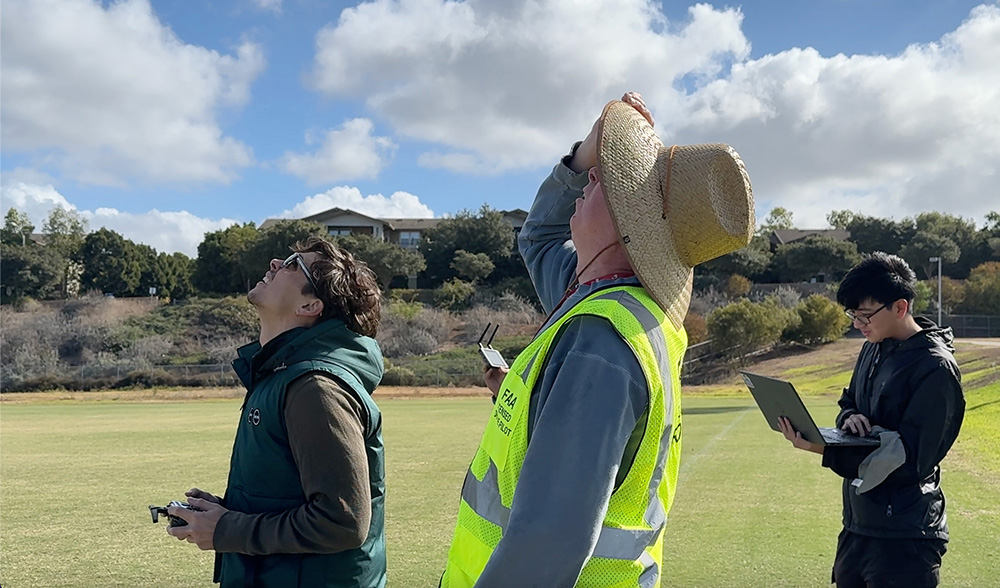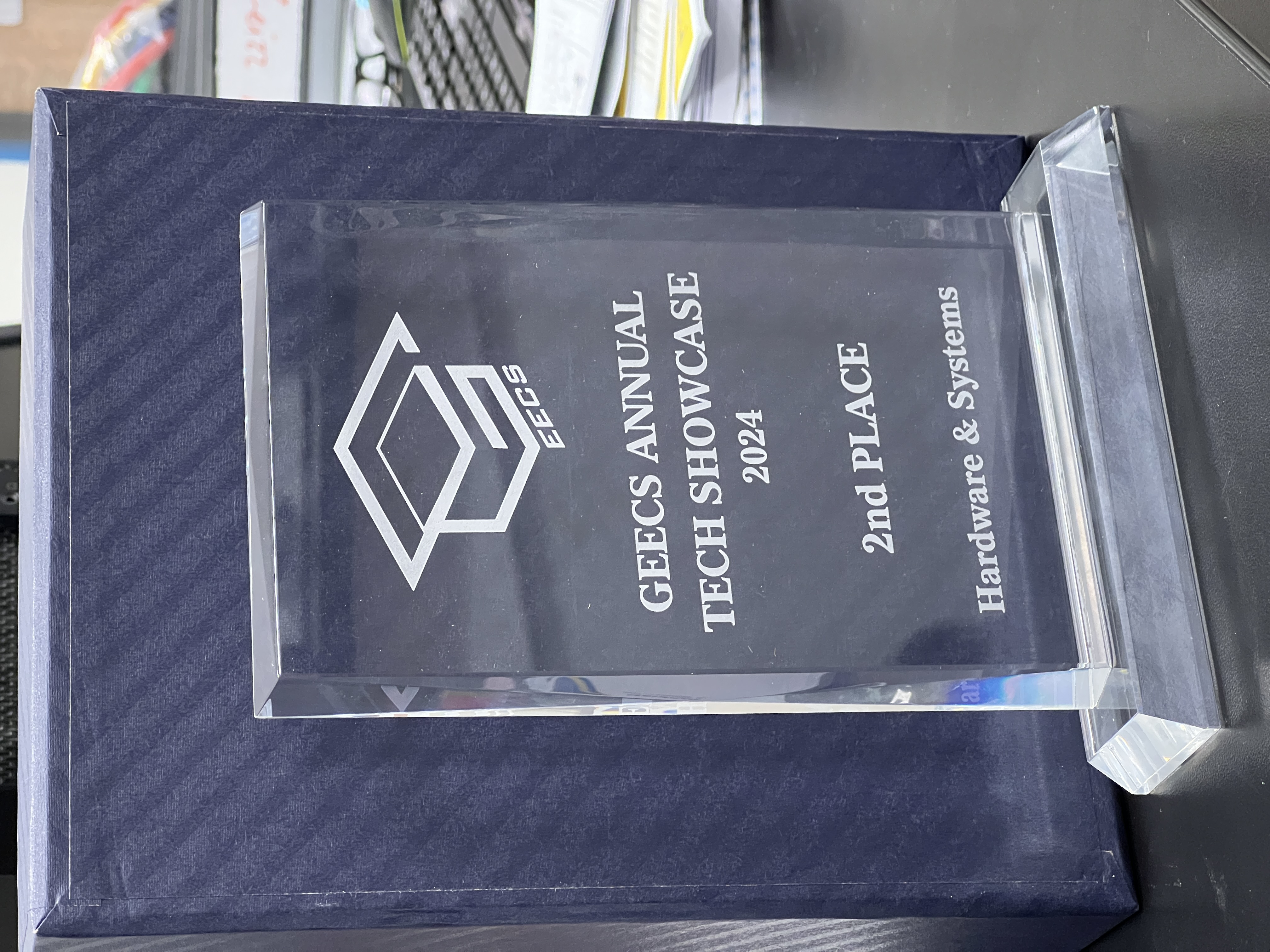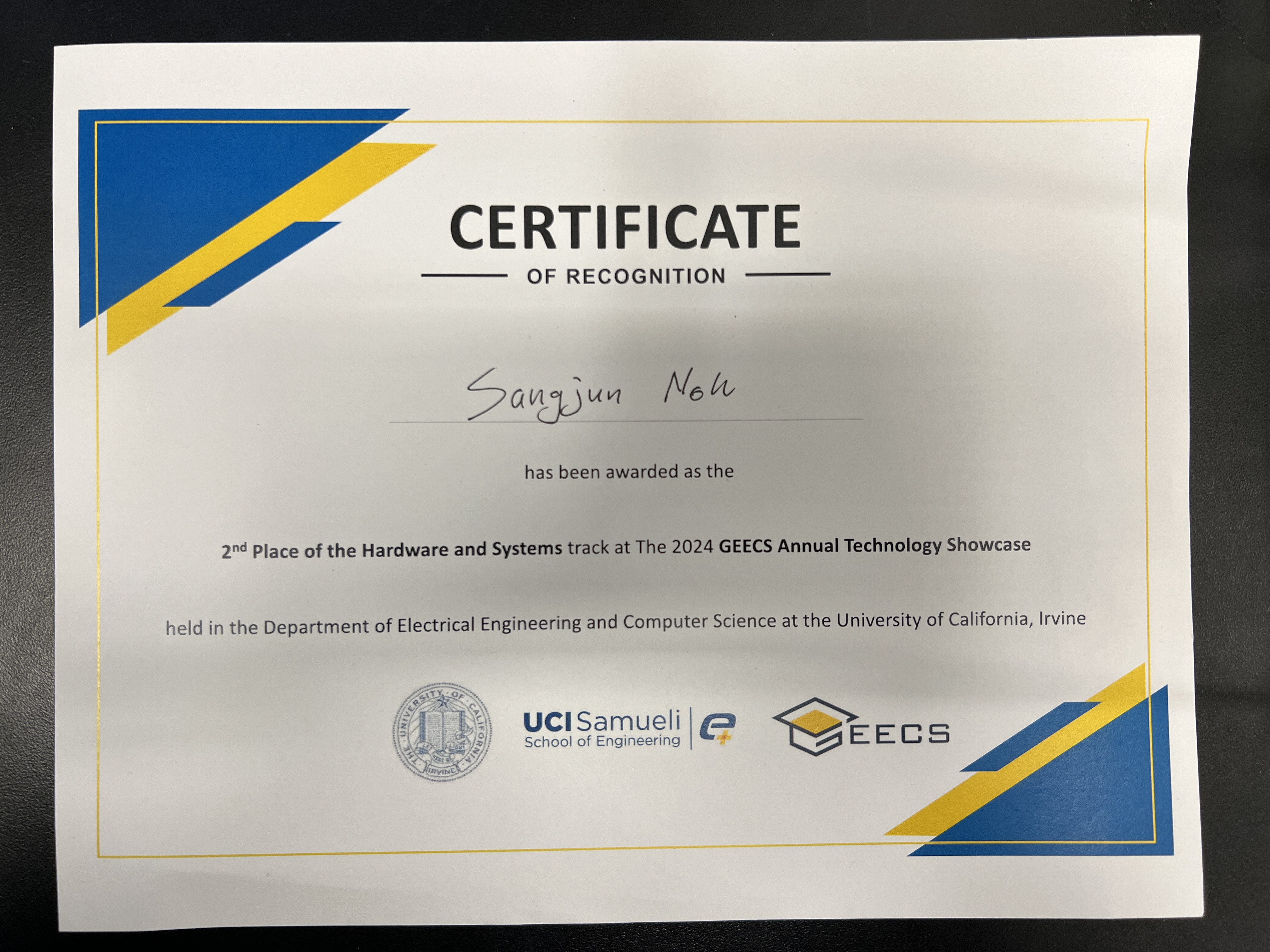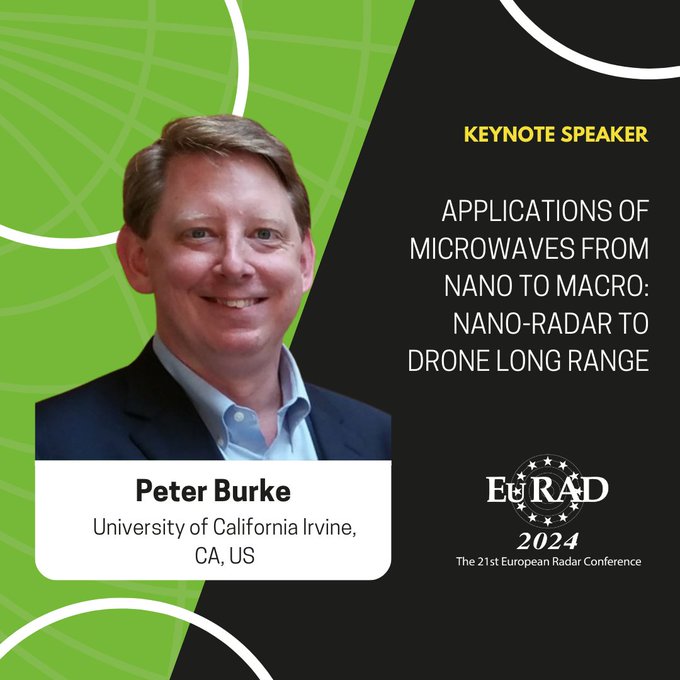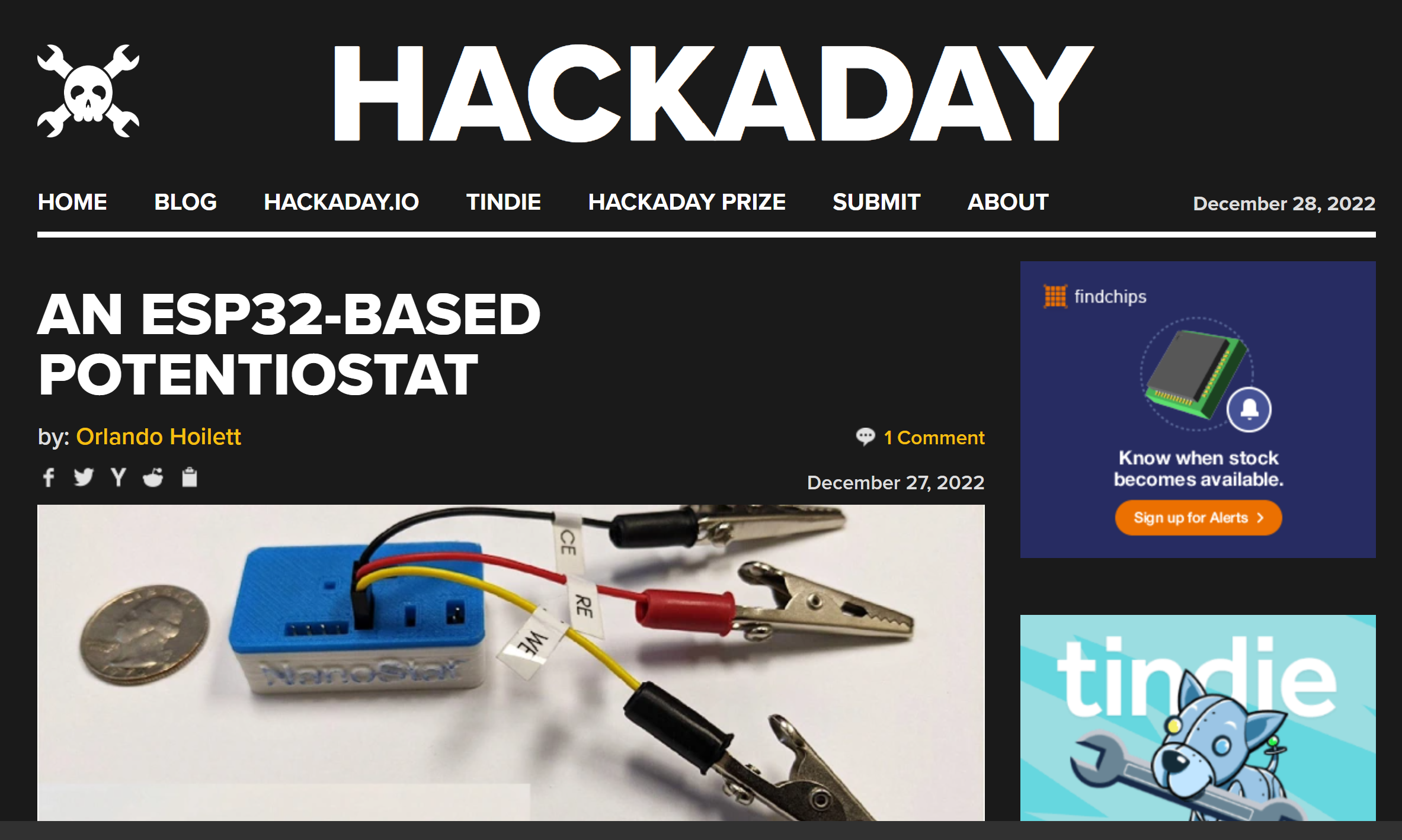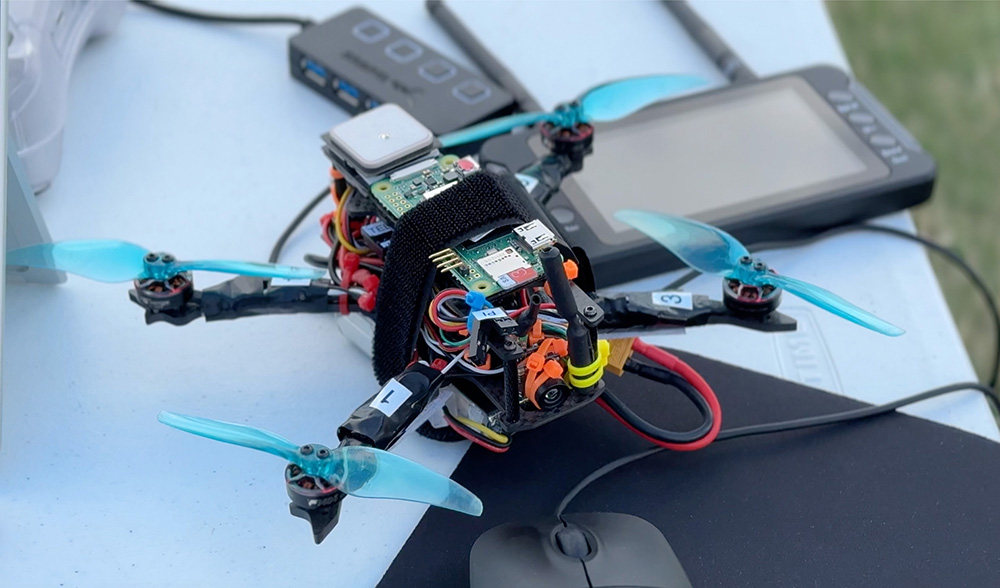 Aiden Dodge’s drone before its flight
Aiden Dodge’s drone before its flight
EuRAD2024 Keynote speech by Peter Burke, UC Irvine “Applications of Microwaves from Nano to Macro: Nano-radar to Drone Long Range”
Students Build and Fly Guinness-Record Drone
https://engineering.uci.edu/news/2024/11/students-build-and-fly-guinness-record-drone
Nov. 21, 2024 – UCI Professor Peter Burke set a Guinness World Record for the farthest distance to control a drone. Now, the electrical engineering professor is teaching a class where students get to build and fly that exact drone model.
His record-breaking drone was operated from 11,440 miles away – close to antipode, the furthest distance on the planet – at Réunion, a tiny French island in the Indian Ocean. Burke achieved the milestone by controlling the UAV through the internet rather than by radio signals, the way most commercial drones are flown. Now he’s passing on this cutting-edge drone technology to his students.
Burke’s new class (EECS 195) is giving 77 engineering students the chance to build, program and fly an internet-controlled drone that weighs under 250 grams. “These are tiny drones,” said Burke, “but it’s the same electronics as the big drones used in industry. What they learn can be applied to any-sized drone.” He notes their UAVs have the exact same software and hardware as a hundred-thousand-pound drone a former student of his now operates at a Bay Area startup.
In Burke’s class, the students form teams of three that solder, wire, assemble and program their drones. They also learn FAA regulations, safety protocols and theory of how the components work including the GPS, electric motors, batteries (the same batteries that EVs use), radio propagation and more.
“We’ve had a great time building the drones,” said computer science engineering senior Aiden Dodge. “It’s a great way to apply everything we’ve learned up until this point into a real physical project.”
“My dad is a pilot,” said electrical engineering senior Catherine Riker. “One of the cool perks of this class is that we actually get an FAA license, which I can show off to my dad.”
Many students love the hands-on aspect of the class. “I really like soldering – it’s really cool,” said electrical engineering senior Antara Kundu, who recently interned on an aircraft carrier and wants to work in the defense industry. “I love Professor Burke. He is so nice and willing to help. He wants everyone to succeed.”
Burke’s grading system is simple: teams who build the drone get a C; if it flies, they get a B; and if it succeeds in flying and returning through a pre-programmed flight path, they’ll get an A. Burke believes all of them will succeed.
Riker was ecstatic when their drone aced the final mission. “We were able to fly it manually and it successfully flew to its waypoints and returned home so we got an A+!”
Through this class, Burke is transferring cutting-edge know-how to future engineers. If more UAVs can be controlled over the internet, it could have endless applications including search and rescue operations, ocean, forest and land surveying and much more.
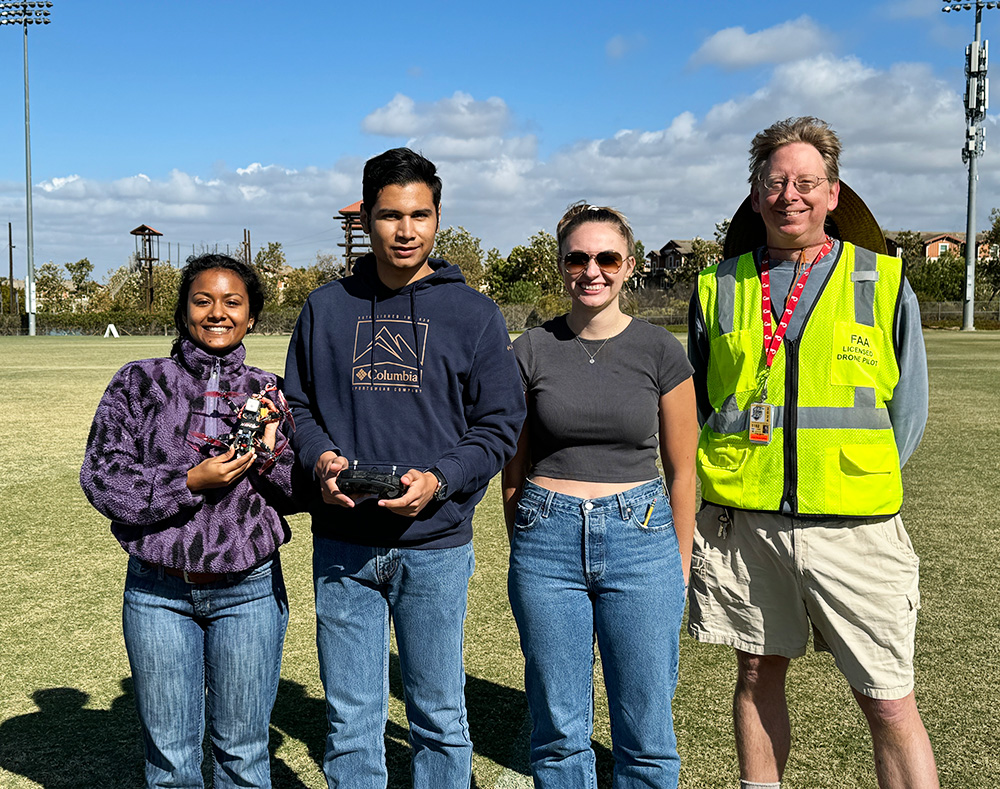 From left: Engineering students Antara Kundu, Ricardo Martinez and Catherine Riker with Professor Peter Burke after the students successfully flew their drone.
From left: Engineering students Antara Kundu, Ricardo Martinez and Catherine Riker with Professor Peter Burke after the students successfully flew their drone.
This technology can also make drones safer and more useful. Current technology doesn’t enable drones to fly in the national air space system as the UAVs need to be in one’s line of sight – a far cry from Burke’s drone operation capabilities. “Because the drone is connected and controlled through the internet, its range is practically infinite,” said Burke.
Getting drones on the internet is also a way to avoid collision. Burke and his students are working on more ways to make drones safer. But for now, in his novel class, Burke is happy seeing the smiles on students’ faces when their drones finally fly.
– Natalie Tso
Sangjun Noh Awarded as the 2nd Place of the Hardware and Systems track at the 2024 GEECS Annual Technology Showcase
Sangjun Noh, PhD student of Burkelab, awarded as the 2nd place of the Hardware and System track at the 2024 GEECS Annual Technology Showcase
 European Microwave Week (EuMW)
European Microwave Week (EuMW)https://news.uci.edu/2023/11/27/uc-irvine-led-team-of-researchers-uncovers-battery-like-functions-of-mitochondria/
First-of-their-kind findings made possible by new generation of powerful microscopes
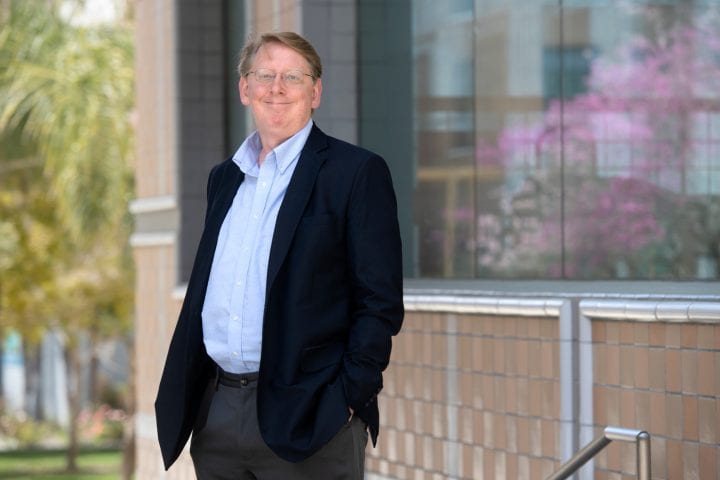
Irvine, Calif., Nov. 27, 2023 – Using new super-resolution microscopes, researchers at the University of California, Irvine and the University of Pennsylvania have for the first time observed electrical charge and discharge functions inside mitochondria isolated from cells.
A mitochondrion is a structure within a cell that uses aerobic respiration to generate adenosine triphosphate, an organic compound that provides energy to support many processes in living tissues. Medical and biomedical engineering researchers have sought greater understanding of mitochondria, recognizing their importance in human health and disease.
While many past research projects have studied the physical characteristics of these components as they exist within living cells, the UCI-led project is the first to use super-resolution microscopes to study live, extracellular mitochondria. By observing the changes in the mitochondrial membranes under different metabolic states this way, the researchers were able to witness the electrophysiological functioning of these living organelles. The team’s results were published in the journal ACS Nano.
“When we first started studying isolated mitochondria, we knew they behaved like a battery based on some work from the Tokyo Metropolitan Institute of Gerontology and UCLA, but we could not control them very well inside the cell to probe them,” said co-author Peter Burke, UCI professor of electrical engineering and computer science. “Now we can control each individual electrical component and cause it to charge and discharge.”
He said the work was made possible by a new generation of super-resolution microscopes. Team members used all three leading methods – Airy microscopy, stimulated emission depletion microscopy and lattice structured illumination microscopy – in their study.
This enabled them to examine cristae, repeating serpentine structures within mitochondria that measure about 100 nanometers. The shortest wavelength of visible light is violet at about 380 nanometers, Burke said, so they needed powerful instruments – super-resolution microscopes – to probe the voltage distribution of something less than a third of that size.
“Imagine trying to study how the battery pack in a Tesla works, but you can only do it by driving the car,” he said. “You would not learn much about the battery pack inside the car.”
By taking mitochondria out of the cell and keeping them alive, Burke and his collaborators –
lead author ChiaHung Lee, UCI graduate student researcher in biomedical engineering, and Douglas Wallace of the University of Pennsylvania – were able to charge and discharge them.
“We could observe in detail how each individual part behaved as a single battery, much like how battery packs in drones and cars – which are many smaller batteries – individually combine to power the vehicle,” Burke said. “Interestingly, we found that the batteries rearrange themselves when they charge and discharge, a feature not found in regular batteries.”
He noted that his experiments proved what researchers had long thought while studying snapshots of frozen (dead) mitochondria: The internal structure changes in response to the metabolic needs of the cell. A mitochondrion can create and destroy its “batteries” (cristae) as needed. This shows that, unlike drones and Teslas, mitochondria can alter their internal shapes based on how much energy is needed by cells.
Burke said this work could have broad applications in human health, including studies on how humans age at the cellular level.
“Once we understand how they create energy, we can start to think of ways to modify this for improving human health and longevity,” he said.
The project was funded by the National Institutes of Health and the Army Research Office.
BurkeLab featured on “The Circuit News partnered with the National Academy of Engineering”
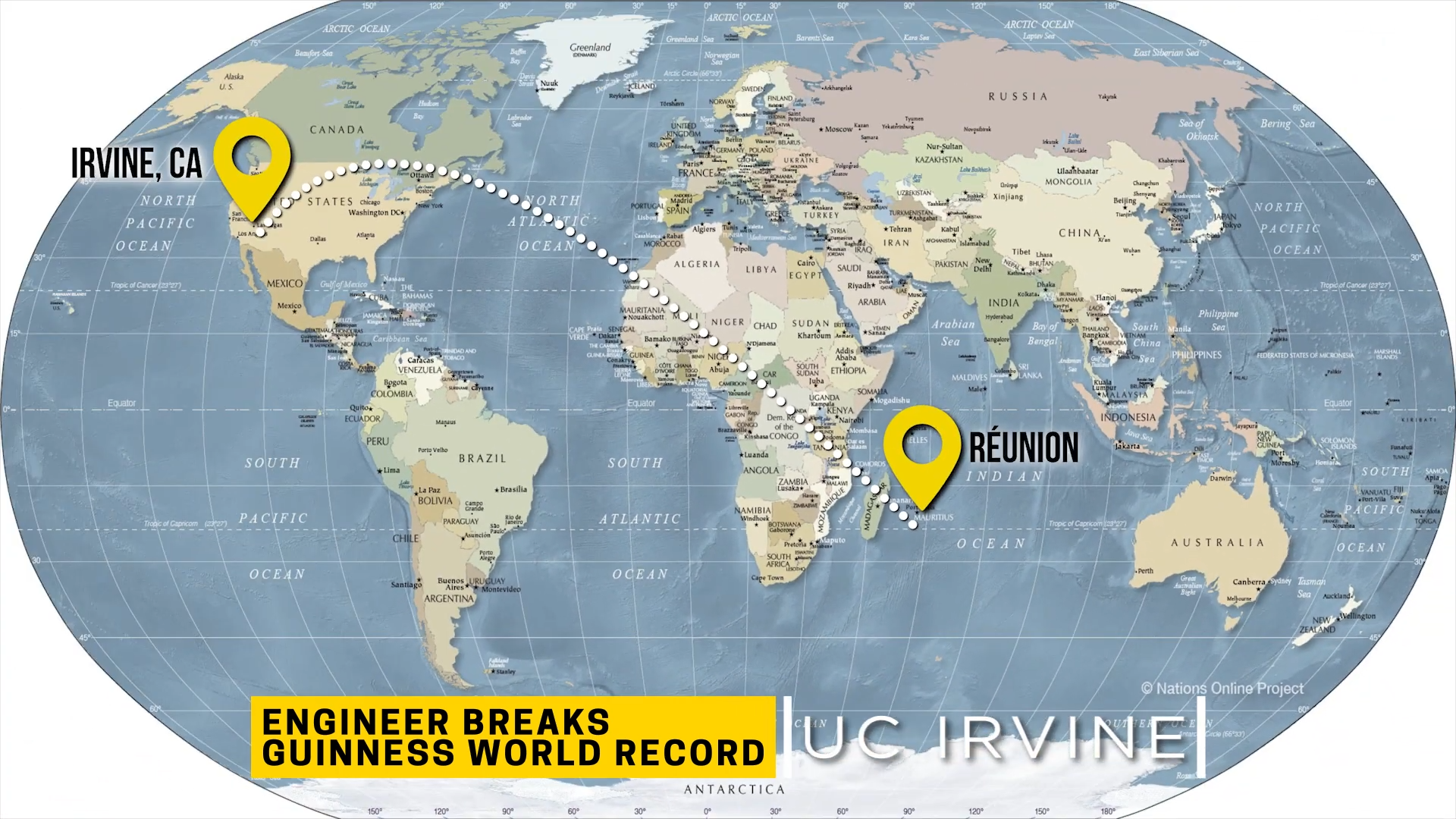
The Circuit News partnered with the National Academy of Engineering featured a highlight of recent BurkeLab Guinness world record setting drone flight:
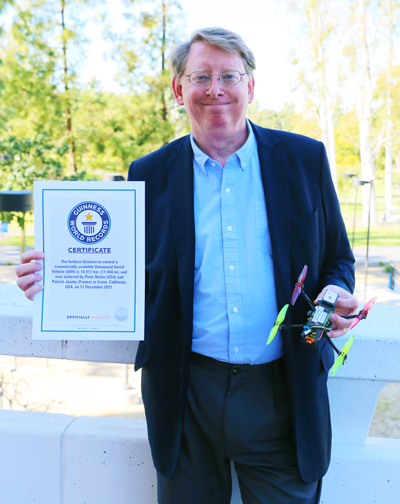
Peter Burke shows off the small drone he used to win the Guinness World Record for “the farthest distance to control a commercially available Unmanned Aerial Vehicle (UAV).”
Feb. 9, 2023 – UCI’s Peter Burke and French colleague Patrick Jeanty have earned a Guinness World Record for their demonstration of remotely flying a drone through the internet from halfway around the world. The official Guinness citation reads, “the farthest distance to control a commercially available Unmanned Aerial Vehicle (UAV) at 18,411 kilometers (11,440 miles).” For comparison, the maximum distance between two points on earth is about 12,450 miles.
With Burke, professor of electronic engineering and computer science, on campus at UCI’s Samueli School of Engineering and Jeanty, research engineer at the University of La Réunion ENERGY-Lab, located on the small French island of Réunion in the Indian Ocean off the coast of Africa, they coordinated and videotaped the successful effort on Dec. 17, 2021. They were notified of the world record status on Dec 9, 2022.
It was early morning in Irvine and early evening in Réunion when Burke placed the small drone in a flying cage set up outside of engineering tower. He had constructed the lightweight (under 250 grams) UAV with off-the-shelf parts and attached a 4G cell phone data modem to the vehicle so it could connect to the internet. On Burke’s cue over Zoom, Jeanty piloted the UAV from Réunion. With a group of students cheering him on in a small conference room, Jeanty activated the drone, flew about six feet vertically for nearly a minute then landed.
“The hard part was how to get the computer on one side of the world to tell the drone on the other side of the world what to do, see, and that’s what we did,” explained Burke, a pioneer in nanoelectronics, who has been working toward this feat with his students for the past few years. He submitted the video with supporting documents to Guinness, and now he has become the first UCI engineering faculty member to hold a Guinness World Record.
“Because the drone is connected and controlled through the internet, its range is practically infinite,” said Burke.
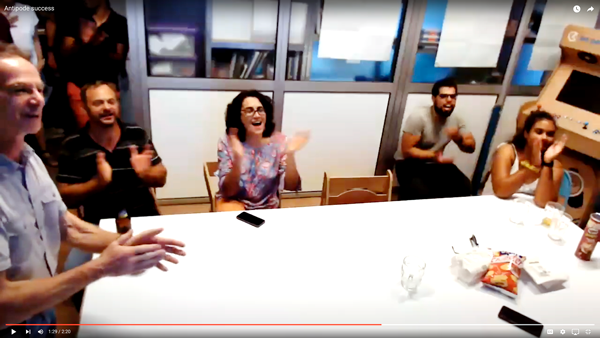
Patrick Jeanty (left) and colleagues applaud their world record winning feat, successfully piloting an internet-connected drone in Irvine, from the French Island of Réunion, 11,440 miles away.
Patrick Jeanty (left) and colleagues applaud their world record winning feat, successfully piloting an internet-connected drone in Irvine, from the French Island of Réunion, 11,440 miles away.
Currently, all commercial drones work with a handheld remote control that connects via radio signal directly to the drone. If UAVs could be controlled over the internet with a phone or computer, it would have numerous applications including search and rescue operations; remote power line and railway safety inspections; water, forest and land surveying, among others.
With a father and brother in the Air Force, Burke has always been interested in aviation and is an avid hobbyist. First, he tried running the radio signal from the remote control to a computer and through the internet to fly the drone. That worked (see published research), so then he took it further and eliminated the handheld remote control altogether, by putting the control software directly on the internet. He tasked a senior engineering student design team with building the web-based drone control station, called Cloudstation.
Lyuyang (Steven) Hu ’20 served as team lead and designed the architecture for the web application. The students’ work was published in the IEEE Journal on Miniaturization for Air and Space Systems in March 2021. A team of graduate students working on their master’s degrees then made improvements to the app in functionality and created tutorials on how to install it.
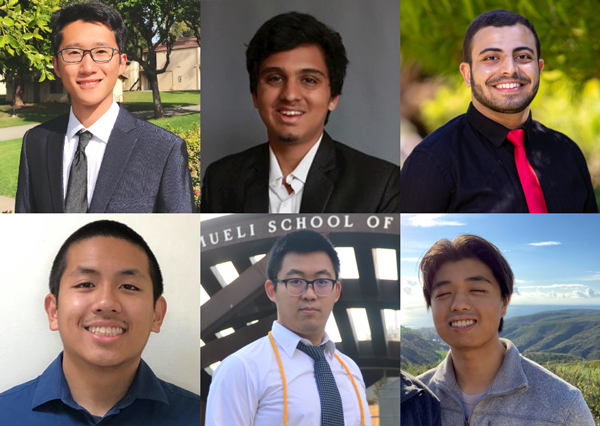
The Cloudstation undergraduate student design team included, clockwise from top left, Lyuyang (Steven) Hu, Omkar Pathak, Mina Bedwany, Hunkyu Lee, Zeyu He and Jace Mica.
The Cloudstation undergraduate student design team included, clockwise from top left, Lyuyang (Steven) Hu, Omkar Pathak, Mina Bedwany, Hunkyu Lee, Zeyu He and Jace Mica.
“CloudStation is built to be used with open-source UAV software and hardware,” said Hu. “The user interface can be accessed through a browser so it provides a convenient way for people who are interested to buy commercially available drones and remotely control them with any mobile device. CloudStation can be adapted to control fleets of aerial, land or sea-based vehicles to collect weather and geographical data or perform search and rescue missions.”
Jeanty, who had met Burke at an IEEE radio and antenna conference in 2019 on Réunion Island, was thrilled to participate in the project. He recruited his colleagues from the local STEM outreach association, called Les Petits Débrouillards de La Réunion. “We followed the procedure that Peter and his students had implemented on their website to control the drone, and when the time came, we pressed the take-off button,” said Jeanty. “It worked! I remember very well seeing Peter get excited and give a thumbs up when the drone was up in the air, controlled by us on the other side of the earth. Then we put the drone back on the ground and everyone applauded. I think it took us a few seconds to really understand what had happened.”
Next, Burke and his current students are working on integrating enhanced remote identification with the internet-based technology to improve safety and collision avoidance, especially important when the drone is out of sight or on the opposite side of the world. The FAA requires that most drones have the ability in flight to provide identification and location information to other parties.
“If we could have drones identify their positions and talk to each other, that would allow us to be able to safely share airspace with other drones and manned aircraft even from very far distances,” said Burke. His work is part of a growing expertise on autonomous vehicles at UCI.
Other contributors to the project include the following students who have all since graduated. In addition to Hu, the undergraduate senior design team members were Omkar Pathak, Zeyu He, Hunkyu Lee, Mina Bedwany and Jace Mica. Master’s thesis team members were Chi Zhang, Lindsey Selena Garcia, Hyun Jay Yang.
– Lori Brandt
AN ESP32-BASED POTENTIOSTAT
New Grant: Award Supports Electronic Nose
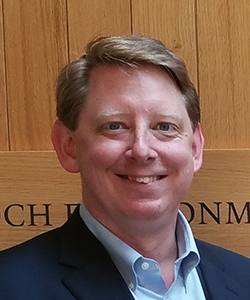 March 31, 2022 – Professor Peter J. Burke in the Department of Electrical Engineering and Computer Science is receiving a new grant from National Science Foundation Division of Chemical, Bioengineering, Environmental and Transport Systems to develop an engineered electronic nose that can “smell” chemicals and determine what kind of chemicals they are……Read more.
March 31, 2022 – Professor Peter J. Burke in the Department of Electrical Engineering and Computer Science is receiving a new grant from National Science Foundation Division of Chemical, Bioengineering, Environmental and Transport Systems to develop an engineered electronic nose that can “smell” chemicals and determine what kind of chemicals they are……Read more.
![]()
July 1, 2020 – Several years ago, UC Irvine electrical engineering professor Peter Burke helped develop a broadband calibration technique that could successfully measure, with nanoscale resolution, the properties of nanowires, nanotube quantum dots and other nanoelectronic components on top of and inside of semiconductor wafers. The technique has been adopted in industry and commercialized by numerous companies. ……Read more.
